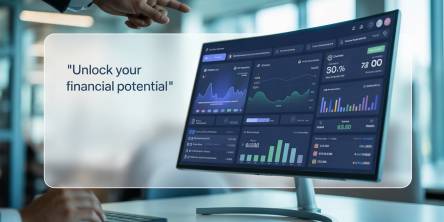How Shopping Malls Stand to Benefit from Data Visualization

The retail sector, especially shopping malls, is a critical part of the global economy. Unfortunately, they have suffered quite a bit recently, leading mall owners to look for means to help them navigate the challenges that lay ahead of them. This is where data visualization comes in; so come on and take a look at how this mighty tool can revolutionize shopping malls once again.
The compilation of data on shopping malls is not a new task. Most of the mall owners today can readily quote statistics based on revenue and rent per square meter along with building utility and maintenance costs. And, while these statistics are no doubt useful, it is particularly not helpful when thinking about what kinds of stores would recruit for empty spaces that would s benefit stores from being clustered together, or how can mall layout could contribute to footfall patterns and visitor traffic.
1. Improved revenue: One of the biggest benefits data visualization can help mall owners with is that it allows individual stores’ stats, performance, and other data points to be analyzed separately. These insights can then be combined to determine any number of combinations that are posed to deliver the best value for the mall.
2. Better profitability: Shop owners are bound by the location of their business to care about footfall. However, the onus for ensuring the best possible footfall is shared by the mall owners as well, especially since the footfall a mall receives is directly related to rents, profitability, etc. In this context, data visualization can help by combining the might of solutions such as ads, amenities, coupons and indoor maps, to gain the requisite insights to achieve better profits for the mall.
3. Cut down vacancies: Ensuring stores are rented is crucial to both brands, other stores in the mall, and, of course, mall owners. Think about it — having empty spaces in a mall for too long is bound to take a toll on customers’ opinion of the mall and, thus, cut down the footfall the given mall receives. So how can shopping malls go about dealing with vacant stores? With help from data visualization, of course — this handy tool can help companies present easily comprehensible information, such as available stores, the performance of other stores in the mall, etc., to prospective renters. Such visualized data superimposed over the mall’s indoor map can help the sales team achieve targeted outcomes.
4. New revenue streams: There is no denying that a shopping mall is beaming with potential when it comes to possible sources of revenue. There are provisional stalls, seasonal displays, special event spots, etc. but for them to serve as effective revenue streams, shopping malls must also be able to get their placement just right. Data visualization can help in this context by providing an indoor map that identifies factors such as stores that may be best in sync with the intended display or specific areas which receive low foot traffic and could use a boost or some such.
The coronavirus pandemic came knocking on the door a few years ago and turned the world of shopping malls, along with various other industries, upside down. However, as the world gradually gets back on its feet, companies that run shopping malls are starting to realize that it is not business as usual, i.e. customers' demands and expectations as well as how the market goes about serving said customer expectations has changed considerably. In such a cut-throat market, data visualization remains among the top choices of tools that can help companies successfully navigate the complexities of the market and achieve their goals. If you too want to be able to do that, it is time you got in touch with a data visualization service provider.
Similar Articles
Choosing the right GIS mapping software depends on what you need to accomplish. Some platforms cater to developers who want to build custom applications from scratch.
For data intensive industries such as insurance, the global business landscape is undergoing a profound transformation. Thanks to all the relentless technological innovation, this shift presents both significant challenges and unparalleled opportunities for modernization of the insurance sector.
Organizations are always looking for newer technologies to aid their operations. So, this hunt revolves around solutions that offer not only agility and scalability but are also cost-effective.
Not long ago, the idea of multiple AI agents working together, each with a specific role, collaborating to solve problems, felt like science fiction.
In today’s data-driven world, choosing the right business intelligence (BI) platform can make or break your organization's analytics success.
We all know that companies today are no longer limited to a single physical location. Work processes are also no longer strictly isolated.
It is neither secret nor news that the mind-boggling pace of digital transformation around us has totally altered consumer expectations.
In the world of finance, speed and accuracy are everything. Decisions made a day late can cost millions, and delayed visibility into financial performance can leave even the best organizations blind to risks.
Discover the best tools to enhance employee recognition, boost morale, and create a more motivated, engaged workplace culture.









